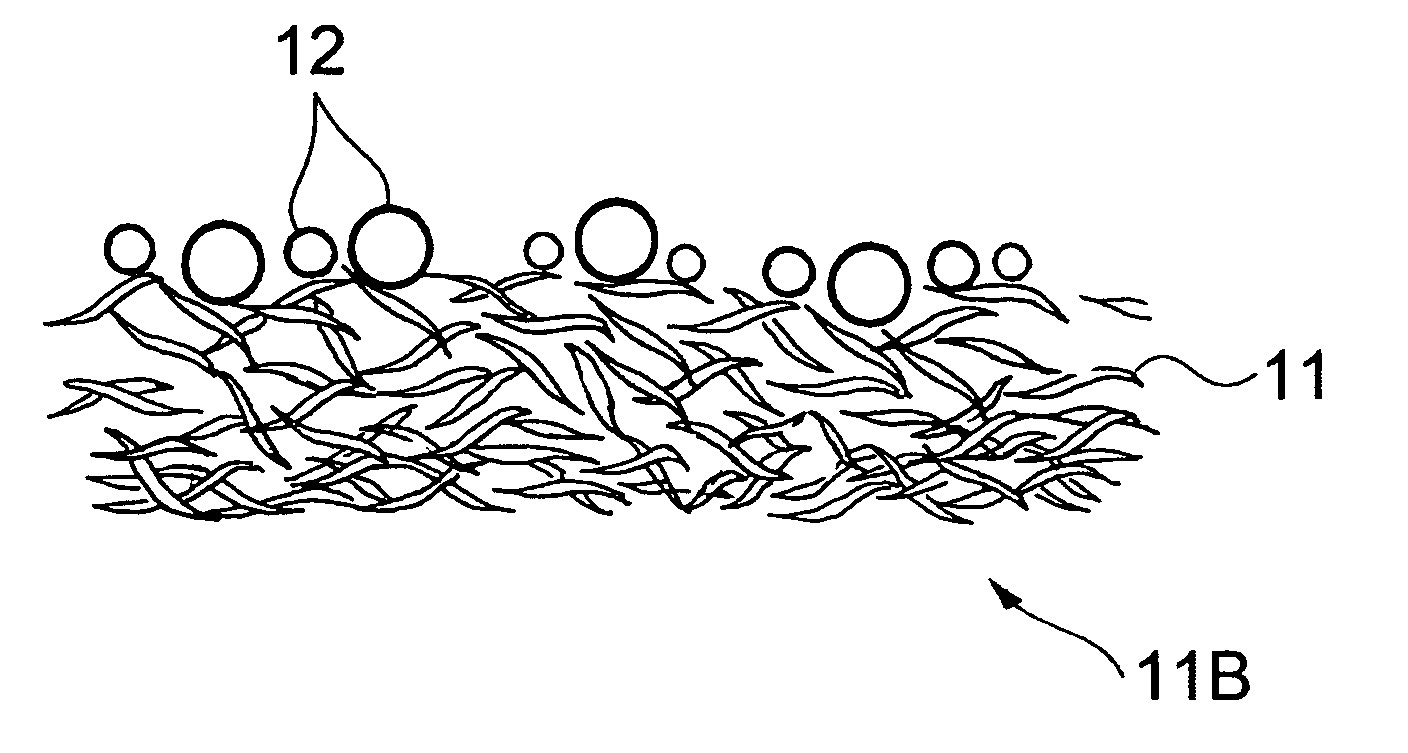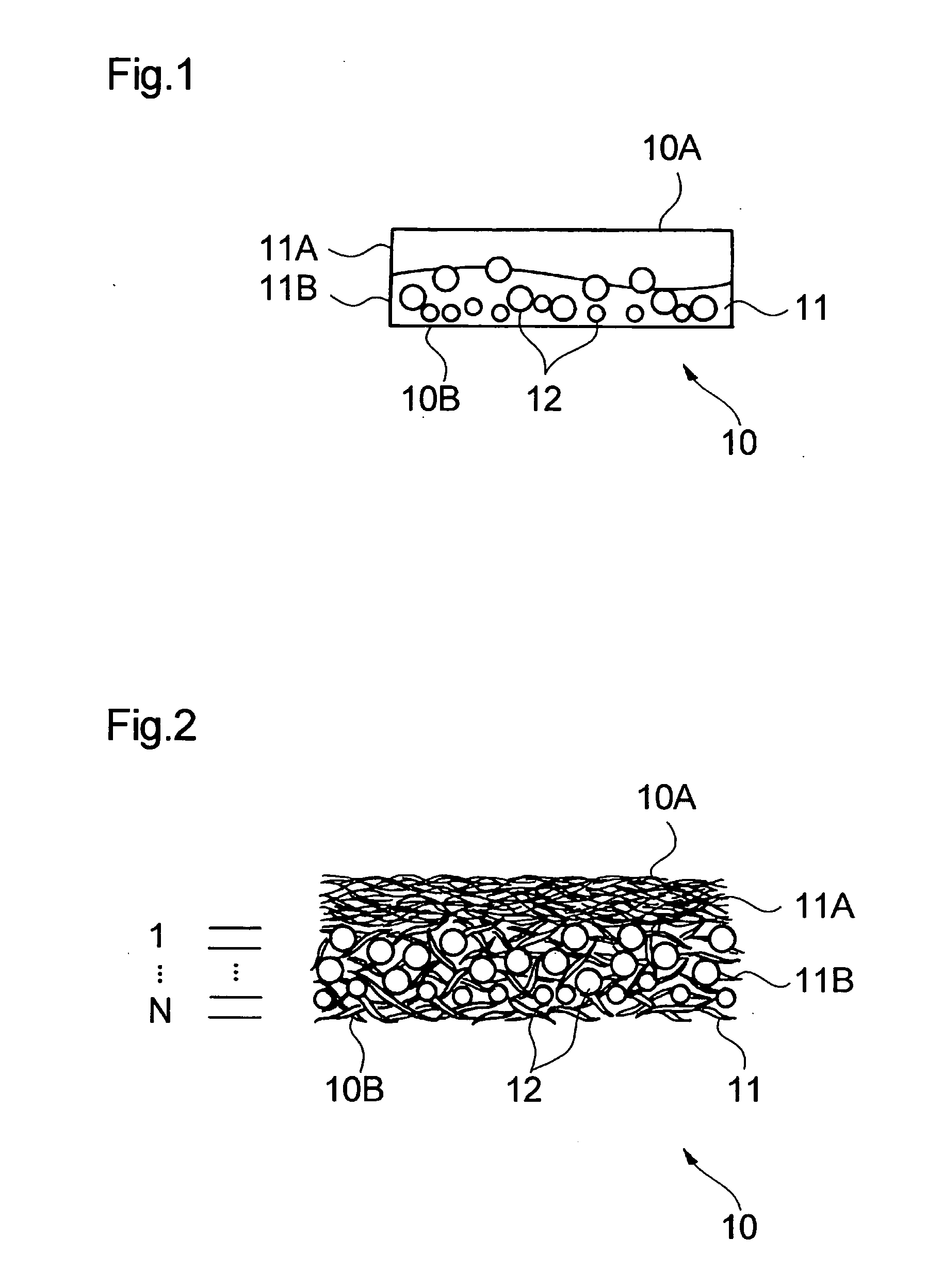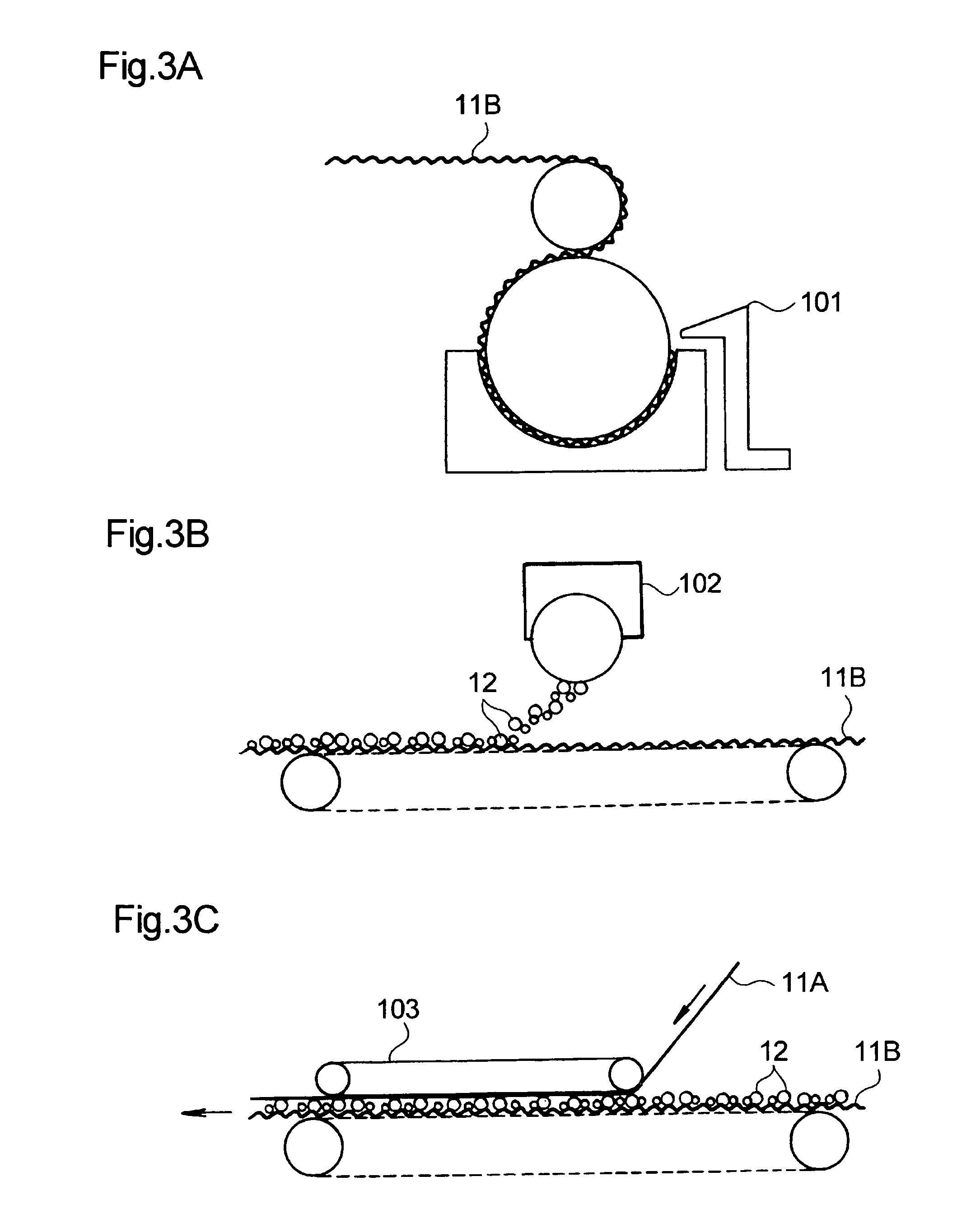Absorbent sheet and absorbent article using the same
- Summary
- Abstract
- Description
- Claims
- Application Information
AI Technical Summary
Benefits of technology
Problems solved by technology
Method used
Image
Examples
first embodiment
[0022] As illustrated in FIG. 1, an absorbent sheet 10 of the first embodiment is a thin sheet having a first surface 10A and a second surface 10B. The absorbent sheet 10 contains a fibrous material 11 and a particulate superabsorbent polymer (polymer particles) 12. The superabsorbent polymer particles 12 are dispersed in the thickness direction of the absorbent sheet I0 in a state of being held by the fibrous material 11.
[0023] When the portion in the thickness direction of the absorbent sheet 10 where the superabsorbent polymer particles are dispersed is divided into regions by at least one plane perpendicular to the thickness direction of the sheet, the average particle size of the superabsorbent polymer 12 dispersed in each region decreases from the side of the first surface 10A to the side of the second surface 10B of the absorbent sheet.
[0024] The absorbent sheet 10 of the first embodiment preferably has two layers 11A and 11B of the fibrous material 11 as illustrated in FIG....
second embodiment
[0079] When the lower fiber layer 11B of the absorbent sheet 10 of the second embodiment is divided into regions by a plane perpendicular to the thickness direction of the sheet, the average particle size of the superabsorbent polymer 12 dispersed in each region decreases from the side of the first surface 10A to the side of the second surface 10B of the absorbent sheet 10. The region nearer to the second surface 10B contains more polymer particles 12A. The region nearer to the first surface 10A contains more polymer particles 12B.
[0080] The polymer particles 12A having a higher absorption rate preferably have a rate of absorbing a 0.9% edible salt aqueous solution (hereinafter simply referred to as an absorption rate) of 0.8 μg / sec or higher, more preferably 1.0 g / g / sec or higher, as measured in accordance with JIS K 7224. On the other hand, the polymer particles 12B having a lower absorption rate preferably have an absorption rate of 0.7 g / g / sec or lower, more preferably 0.65 g / g / ...
third embodiment
[0096] An example of a preferred process of producing the absorbent sheet 10 of the third embodiment is described by way of FIGS. 8A and 8B.
[0097] The process of producing the absorbent sheet 10 of the third embodiment is the same as the process of producing the absorbent sheet of the first embodiment, except for the polymer sprinkling step as will be described below.
[0098] In the production of the absorbent sheet 10 according to the third embodiment, the polymer sprinkling step is divided into a first polymer sprinkling substep (FIG. 8A) and a second polymer sprinkling substep (FIG. 8B). The polymer particles 12C fed from a hopper 102C in the first polymer sprinkling substep have a smaller particle size than the polymer particles 12D fed from a hopper 102D in the second polymer sprinkling substep.
[0099] A second lower fiber sublayer 111B that has been dried in the first drying step described supra is transferred to the first polymer sprinkling substep, where smaller polymer parti...
PUM
| Property | Measurement | Unit |
|---|---|---|
| Current | aaaaa | aaaaa |
| Digital information | aaaaa | aaaaa |
| Thickness | aaaaa | aaaaa |
Abstract
Description
Claims
Application Information
 Login to View More
Login to View More - R&D
- Intellectual Property
- Life Sciences
- Materials
- Tech Scout
- Unparalleled Data Quality
- Higher Quality Content
- 60% Fewer Hallucinations
Browse by: Latest US Patents, China's latest patents, Technical Efficacy Thesaurus, Application Domain, Technology Topic, Popular Technical Reports.
© 2025 PatSnap. All rights reserved.Legal|Privacy policy|Modern Slavery Act Transparency Statement|Sitemap|About US| Contact US: help@patsnap.com



